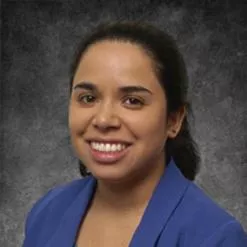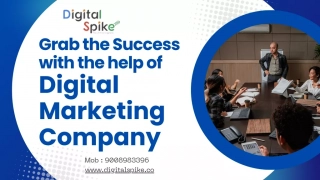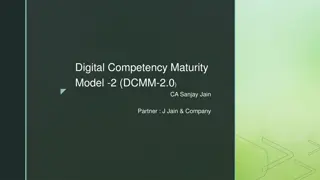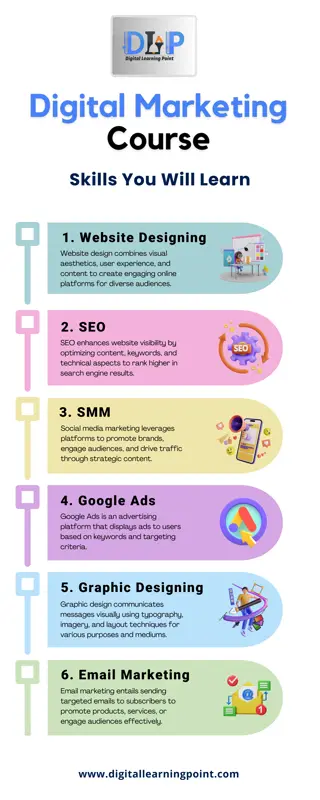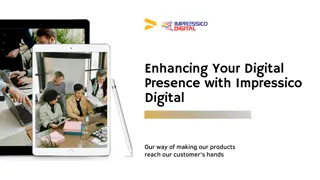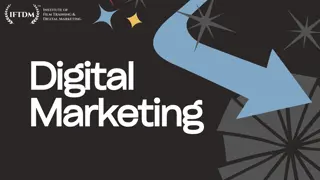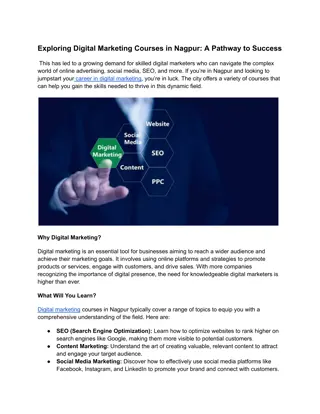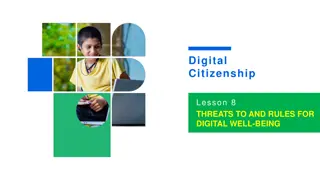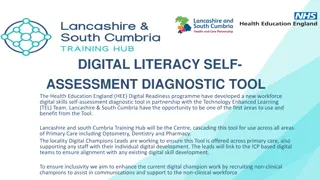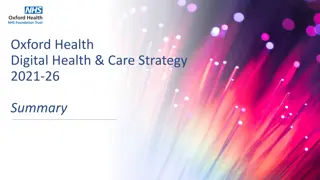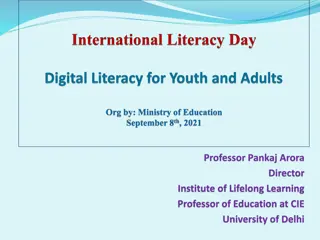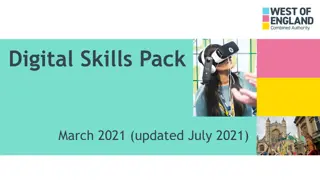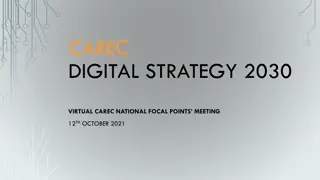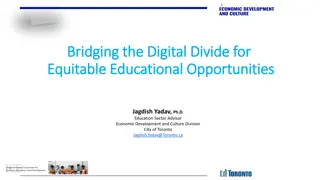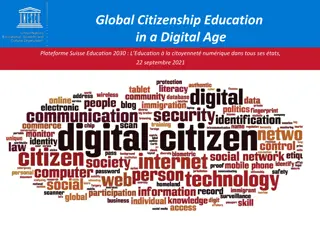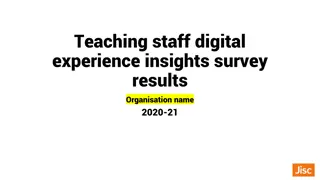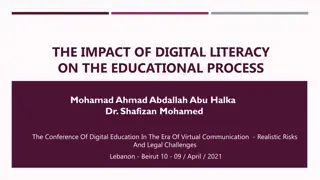Digital Education
Digital Education Support for Online Undergrad Course Development led by Jon Harbor, the Director of Digital Education and Associate Vice Provost for Teaching and Learning. The unit focuses on various aspects such as self-supporting professional and online programs, development of online sections for undergrad courses, compliance, accessibility, and strategy development for the university.
Download Presentation

Please find below an Image/Link to download the presentation.
The content on the website is provided AS IS for your information and personal use only. It may not be sold, licensed, or shared on other websites without obtaining consent from the author.If you encounter any issues during the download, it is possible that the publisher has removed the file from their server.
You are allowed to download the files provided on this website for personal or commercial use, subject to the condition that they are used lawfully. All files are the property of their respective owners.
The content on the website is provided AS IS for your information and personal use only. It may not be sold, licensed, or shared on other websites without obtaining consent from the author.
E N D
Presentation Transcript
Digital Education Support for Online Undergrad Course Development JON HARBOR DIRECTOR, DIGITAL EDUCATION ASSOCIATE VICE PROVOST FOR TEACHING AND LEARNING
What is Digital Education (the administrative unit, in STEW) 18-person unit, formerly part of PEC, administration for: Self-supporting professional and online programs Masters programs (residential, hybrid, and online) Non credit and CEU courses and programs Development of online sections of undergrad courses* to increase access for campus-based students Compliance and Accessibility External Partner and MOOC contracts and relationships DE strategy development for the university (AP4DE) * There are no plans to develop fully online undergraduate degree programs at PUWL
Undergrad Online Course Support Undergrad Online Course Support - - History History Indiana College Network (ICN) PU students taking online courses at other universities, in part because we had capacity problems, 4,000 enrollments/yr, became very costly.
Undergrad Online Course Support Undergrad Online Course Support - - History History Indiana College Network (ICN) . PEC program expand access and remove need for ICN $ and instructional design to develop an online section of selected f-2-f courses, then instructional subsidy to teach the online sections (in addition to f-2-f). Co-funding model. Now >70 DE online courses, 20,000+ annual enrollments; ICN zero 70% of Spring 2016 graduates had taken at least one online class at Purdue Online and f-2-f sections of the same course have similar grade distributions These are generally-funded courses that are typically part of load Most online courses taught with no subsidy
The Challenges Continued strong interest in new UG online course development across campus access, flexibility, pedagogy, summer. Budget model subsidizes development and subsidizes teaching online sections. Over time costs rise, budget fixed
The Challenges Course demand changes enrollment decline in some courses 600 300-400 200-250
The Challenges Section-based model reduces # courses supported and gives highly variable subsidy per student; a disincentive for scalable pedagogy Course B: $285 per student Course A: $14 per student
The Challenges To continue offering support to develop new online versions of courses, we need to change the financial model. Strong interest in new UG online course development across campus access, flexibility, pedagogy, summer. Many requests to develop new courses. Budget model subsidizes development and also subsidizes teaching the online sections. Over time cost rises, budget fixed Course demand changed enrollment decline in some courses Section-based model reduces # courses supported
Proposed Solution for Discussion A) Sunset support where enrollment declined Where total course enrollment in the last three AY semesters (sum of f-2-f and online) is < total course enrollment prior to the addition of online Support ends; can propose redesign = 15% of supported courses Re-evaluate each fall B) Tie subsidy to enrollment C) Limit duration of subsidy
Proposed Solution for Discussion A) Sunset support - where enrollment has declined B) Tie subsidy to enrollment change from uniform $6,000 per online section teaching subsidy, to: $40 /sch in online sections max of $24,000 /course/semester (200 online students, 3cr). 10% of supported courses currently >$24,000 50% of supported sections have enrl limit <50. at $40/sch, 50 stdts, 3cr = $6000 30% of supported sections have enrl limit <30 C) Limit duration of subsidy
Proposed Solution for Discussion A) Sunset support - where enrollment has declined B) Tie subsidy to enrollment C) Limit duration of subsidy Limit subsidy to three AY semesters after design, and each redesign (this is current practice now, but was not prior to 2015)
What would this do Move to a sustainable model: continue instructional design and financial support to develop online versions of f-2-f courses continue to provide financial subsidy for teaching the online section the first three times continue to provide financial and instructional designer support to redesign online versions Legacy courses with enrollment < pre-online moved off support More courses subsidized, some at a lower subsidy level; Incentive for small section sizes removed New courses moved off support or refreshed every couple of years, so that additional courses can be developed and launched
Dept. Head input Dept. Head input You have this in a handout What have we missed? What do you like / not like about this? What modifications or other ideas do you suggest? Additional feedback to jharbor@purdue.edu
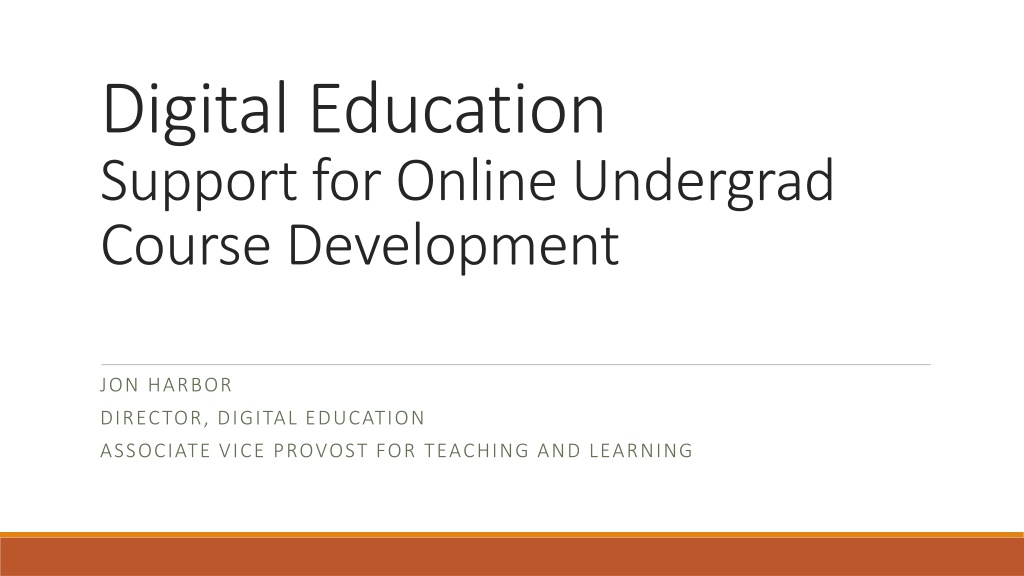
 undefined
undefined








